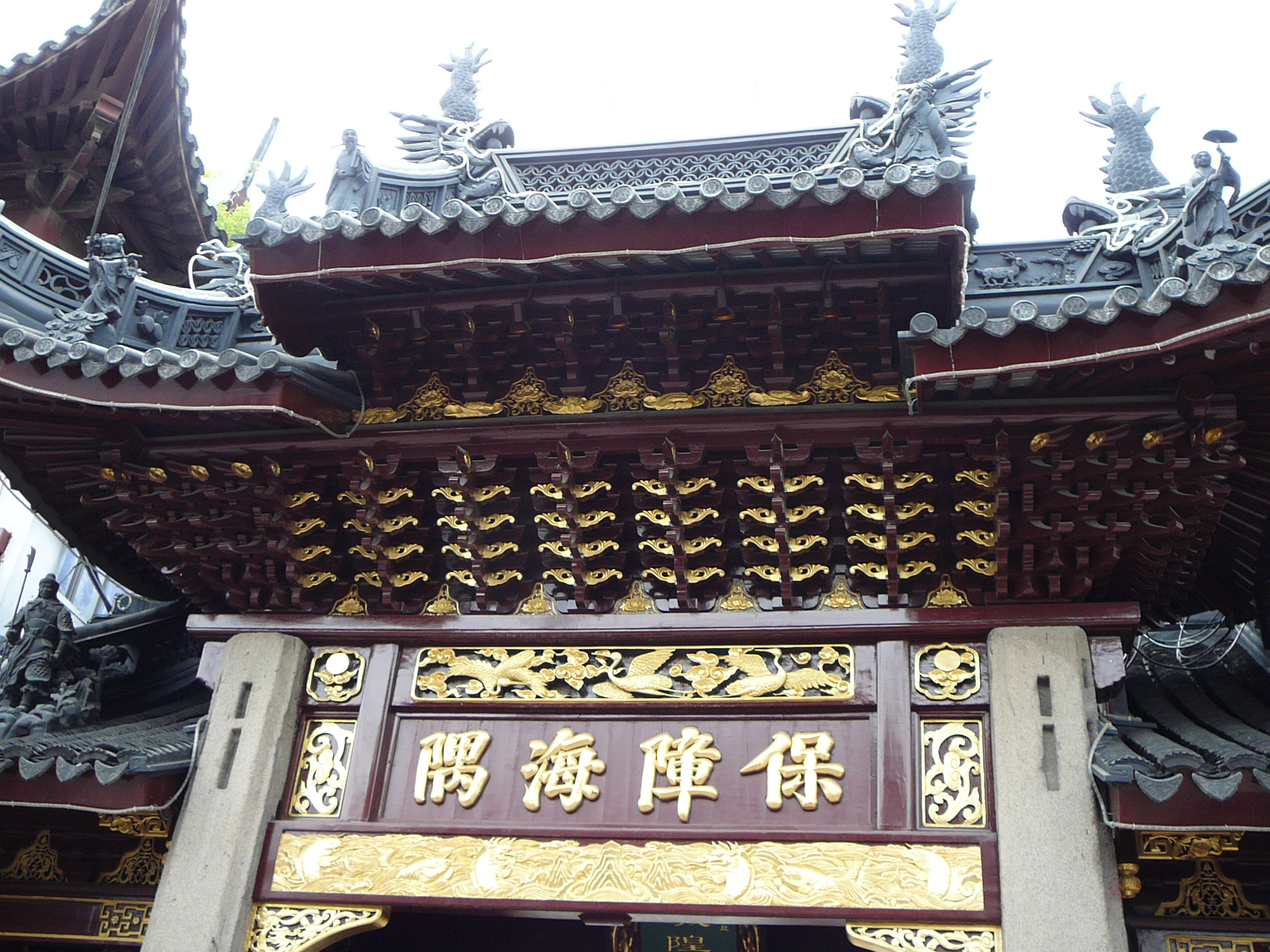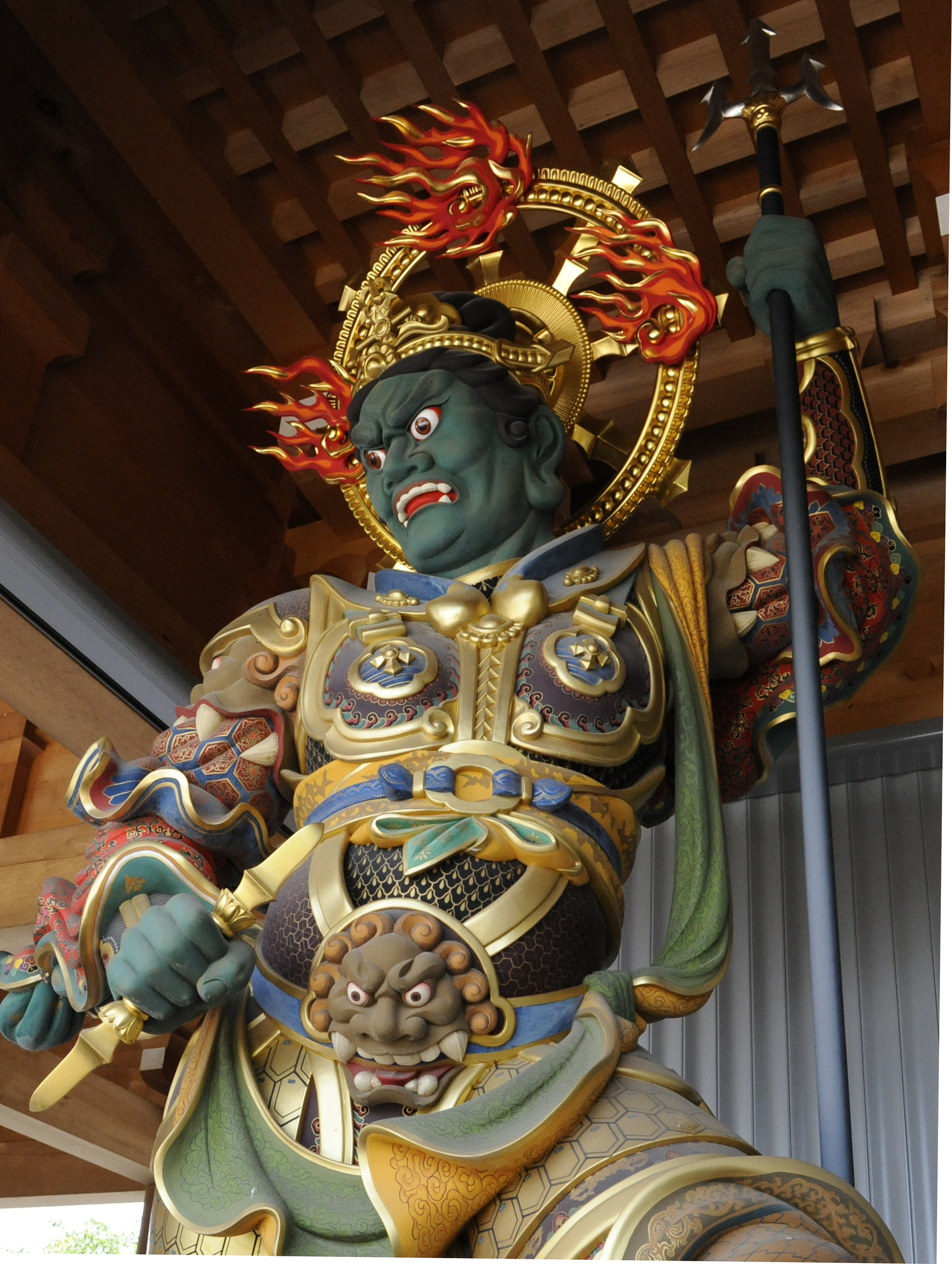|
Luohou Temple
The Luohou Temple () is a Buddhist temple located in Taihuai Town of Wutai County, Xinzhou, Shanxi, China. Name Luohou Temple was named after Rāhula and Luo Hou Luo () for short, the only son of Siddhartha Gautama (commonly known as Buddha), and his wife Princess Yasodharā. History The temple was first established in the Tang dynasty (618-907) and initially called Shanzhu Geyuan (). The temple was rebuilt in 1492, during the Hongzhi period (1488-1505) of Ming dynasty (1368-1644). During the Wanli period (1572-1620), Concubine Li Yanfei () donated property to restore the temple. In 1705, in the 44th year of Kangxi period (1662-1722) of Qing dynasty (1644-1911), the temple converted to Tibetan Buddhism. In 1792, in the 57th year of Qianlong period (1736-1795), the temple was reconstruction. In 1983, the temple has been classified as a "National Key Buddhist Temple in Han Chinese Area". In 2013, Luohou Temple is listed among the 7th batch of "State Cultural Protect ... [...More Info...] [...Related Items...] OR: [Wikipedia] [Google] [Baidu] |
Paifang
A ''paifang'', also known as a ''pailou'', is a traditional style of Chinese architectural arch or gateway structure. Evolved from the Indian subcontinent's ''torana'' through the introduction of Buddhism to China, it has developed many styles and has been introduced to other East Asian countries, such as Korea, Japan, and Vietnam. Etymology The word ''paifang'' () was originally a collective term for the top two levels of administrative division and subdivisions of ancient Chinese cities. The largest division within a city in ancient China was a ''fang'' (), equivalent to a current day ward. Each ''fang'' was enclosed by walls or fences, and the gates of these enclosures were shut and guarded every night. Each ''fang'' was further divided into several ''pai'' (), which is equivalent to a current day (unincorporated) community. Each ''pai'', in turn, contained an area including several hutongs (alleyways). This system of urban administrative division and subdivision reached an ... [...More Info...] [...Related Items...] OR: [Wikipedia] [Google] [Baidu] |
Kangxi Emperor
The Kangxi Emperor (4 May 1654– 20 December 1722), also known by his temple name Emperor Shengzu of Qing, born Xuanye, was the third emperor of the Qing dynasty, and the second Qing emperor to rule over China proper, reigning from 1661 to 1722. The Kangxi Emperor's reign of 61 years makes him the longest-reigning emperor in Chinese history (although his grandson, the Qianlong Emperor, had the longest period of ''de facto'' power, ascending as an adult and maintaining effective power until his death) and one of the longest-reigning rulers in history. However, since he ascended the throne at the age of seven, actual power was held for six years by four regents and his grandmother, the Grand Empress Dowager Xiaozhuang. The Kangxi Emperor is considered one of China's greatest emperors. He suppressed the Revolt of the Three Feudatories, forced the Kingdom of Tungning in Taiwan and assorted Mongol rebels in the North and Northwest to submit to Qing rule, and blocked Tsarist R ... [...More Info...] [...Related Items...] OR: [Wikipedia] [Google] [Baidu] |
Vaiśravaṇa
(Sanskrit: वैश्रवण) or (Pali; , , ja, 毘沙門天, Bishamonten, ko, 비사문천, Bisamuncheon, vi, Đa Văn Thiên Vương), is one of the Four Heavenly Kings, and is considered an important figure in Buddhism. Names The name is a derivative (used, e.g., for patronymics) of the Sanskrit proper name from the root "hear distinctly", (passive) "become famous". The name is derived from the Sanskrit ' which means "son of Vishrava", a usual epithet of the Hindu god Kubera. is also known as Kubera and Jambhala in Sanskrit and Kuvera in Pāli. Other names include: * , a calque of Sanskrit ' * . This was a loanword from into Middle Chinese with the addition of the word "heaven, god" * , THL ''Namthöse'', "Prince All-Hearing", a calque of Sanskrit ' * mn, Баян Намсрай is a loan from Tibetan ''thos sras'', a short form of Tibetan ''rnam thos sras'' with the addition of an honorific * th, ท้าวกุเวร ''Thao Kuwen'' or ''Thao Wetsu ... [...More Info...] [...Related Items...] OR: [Wikipedia] [Google] [Baidu] |
Virūpākṣa
Virūpākṣa (Sanskrit; Pali: Virūpakkha; traditional Chinese: 廣目天王; simplified Chinese: 广目天王; pinyin: ''Guǎngmù Tiānwáng''; Japanese: 広目天 ''Kōmokuten'') is a major deity in Buddhism. He is one of the Four Heavenly Kings and a dharmapala. Names The name ''Virūpākṣa'' is a Sanskrit compound of the words ''virūpa'' (ugly; deformed) and ''akṣa'' (eyes). Buddhaghosa interpreted ''virūpa'' as also meaning "various", which lends to the understanding that Virūpākṣa is endowed with clairvoyance. Other names include: *traditional Chinese: 廣目天王; simplified Chinese: 广目天王; pinyin: Guǎngmù Tiānwáng; Korean: 광목천왕 ''Gwangmok Cheonwang''; Vietnamese: ''Quảng Mục Thiên'', a calque of Sanskrit ''Virūpākṣa'' *Traditional Chinese: 毘楼博叉; pinyin: Bílóubóchā; Japanese: ''Birubakusha''; Korean: 비류박차 ''Bilyubagcha''; Vietnamese: ''Tỳ Lưu Bác Xoa''. This is a transliteration of the original Sanskrit name ... [...More Info...] [...Related Items...] OR: [Wikipedia] [Google] [Baidu] |
Virūḍhaka (Heavenly King)
Virūḍhaka is a major deity in Buddhism. He is one of the Four Heavenly Kings and a dharmapala. Names The name ''Virūḍhaka'' comes from the identical Sanskrit term, which refers to sprouting grain. As such, his name means "increase" or "growth.". Other names include: *Traditional Chinese: 增長天; simplified Chinese: 増長天; pinyin: ''Zēngzhǎng Tiānwáng''; Japanese: ''Zōjōten'' or ''Zōchōten''; Korean: 증장천왕 ''Jeungjang Cheonwang''; Vietnamese: Tăng Trưởng Thiên, a calque of Sanskrit Virūḍhaka *Traditional Chinese: 毘楼勒叉; pinyin: ''Bí lóu lè chā''; Japanese: ''Birurokusha''; Korean: 비루늑차''Biluneugcha''; Vietnamese: ''Tỳ Lưu Ly.'' This is a transliteration of the original Sanskrit name. *Tibetan: འཕགས་སྐྱེས་པོ, Wylie: 'phags skyes po, THL: Pak Kyepo, "Noble Birth" *Thai: ท้าววิรุฬหก Thao Virunhok is an honorific plus the modern pronunciation of Pali Virūḷhaka. Characteristics ... [...More Info...] [...Related Items...] OR: [Wikipedia] [Google] [Baidu] |
Dhṛtarāṣṭra
Dhṛtarāṣṭra (Sanskrit; Pali: ''Dhataraṭṭha'') is a major deity in Buddhism and one of the Four Heavenly Kings. His name means "Upholder of the Nation." Names The name ''Dhṛtarāṣṭra'' is a Sanskrit compound of the words ''dhṛta'' (possessing; bearing) and ''rāṣṭra'' (kingdom; territory). Other names include: *Traditional Chinese: 持國天; Simplified Chinese: 持国天; pinyin: Chíguó Tiān; Japanese language, Japanese: Jikokuten; Korean language, Korean: 지국천 Jiguk cheon; Vietnamese language, Vietnamese: Trì Quốc Thiên, a calque of Sanskrit ''Dhṛtarāṣṭra'' *Traditional Chinese: 提頭頼吒; Simplified Chinese: 提头赖吒; pinyin: Títóulàizhā; Japanese language, Japanese: Daizurata; Korean language, Korean: 제두뢰타; Vietnamese language, Vietnamese: Đề-đầu-lại-tra. This is a transliteration of the original Sanskrit name. *Classical Tibetan, Tibetan: ཡུལ་འཁོར་སྲུང, Wylie: yul 'khor srung, THL ... [...More Info...] [...Related Items...] OR: [Wikipedia] [Google] [Baidu] |
Chinese Guardian Lions
Chinese guardian lions, or imperial guardian lions, are a traditional Chinese architectural ornament, but the origins lie deep in much older Indian Buddhist traditions. Typically made of stone, they are also known as stone lions or shishi (). They are known in colloquial English as lion dogs or foo dogs / fu dogs. The concept, which originated and became popular in Chinese Buddhism, features a pair of highly stylized lions—often one male with a ball which represents the material elements and one female with a cub—which represents the element of spirit, were thought to protect the building from harmful spiritual influences and harmful people that might be a threat. Used in imperial Chinese palaces and tombs, the lions subsequently spread to other parts of Asia including Japan (see komainu), Korea, Philippines, Tibet, Thailand, Myanmar, Vietnam, Sri Lanka, Nepal, Cambodia, Laos, and Malaysia. Description Statues of guardian lions have traditionally stood in front of Ch ... [...More Info...] [...Related Items...] OR: [Wikipedia] [Google] [Baidu] |
Manjushri
Mañjuśrī (Sanskrit: मञ्जुश्री) is a ''bodhisattva'' associated with '' prajñā'' (wisdom) in Mahāyāna Buddhism. His name means "Gentle Glory" in Sanskrit. Mañjuśrī is also known by the fuller name of Mañjuśrīkumārabhūta (),Keown, Damien (editor) with Hodge, Stephen; Jones, Charles; Tinti, Paola (2003). ''A Dictionary of Buddhism.'' Oxford, UK: Oxford University Press. p.172. literally "Mañjuśrī, Still a Youth" or, less literally, "Prince Mañjuśrī". Another name of Mañjuśrī is Mañjughoṣa. It is claimed that Nurhaci, the founder of what would become the Qing dynasty of China, named his tribe Man (满) after Manjushri. In Mahāyāna Buddhism Scholars have identified Mañjuśrī as the oldest and most significant bodhisattva in Mahāyāna literature. Mañjuśrī is first referred to in early Mahāyāna sūtras such as the Prajñāpāramitā ''sūtra''s and through this association, very early in the tradition he came to symbolize the e ... [...More Info...] [...Related Items...] OR: [Wikipedia] [Google] [Baidu] |
Mahavira Hall
A Mahavira Hall, usually simply known as a Main Hall, is the main hall or building in a traditional Chinese Buddhist temple, enshrining representations of Gautama Buddha and various other buddhas and bodhisattvas. It is encountered throughout East Asia. Names From their importance and use, they are often simply known in English as the temples' "Main" or "Great Halls". The term "Mahavira Hall", also encountered as "Mahāvīra Hall" or "Hall of the Mahāvīra", is a reverse translation, employing the original Sanskrit term in place of its Chinese or English equivalent. They are also known as the Precious Hall of the Great Hero, the Hall of Great Strength, or the Daxiongbao Hall. Less often, a main hall is called an "adytum", after the equivalent area in Greco-Roman temples. It is also sometimes misunderstood as the "Great, Powerful, and Precious Palace".. Description Mahavira Hall is the main hall of a Buddhist temple. It is generally located in the north of the Heavenly King H ... [...More Info...] [...Related Items...] OR: [Wikipedia] [Google] [Baidu] |
Hall Of Four Heavenly Kings
The Hall of Four Heavenly Kings or Four Heavenly Kings Hall (), referred to as Hall of Heavenly Kings, is the first important hall inside a shanmen (mount gate) in Chinese Buddhist temples and is named due to the Four Heavenly Kings statues enshrined in the hall. Maitreya Buddha is enshrined in the Hall of Heavenly King and at the back of his statue is a statue of Skanda Bodhisattva facing the northern Mahavira Hall. In Buddhism, the Maitreya Buddha, also the future Buddha is Sakyamuni's successor. In the history of Chinese Buddhism, Maitreya Buddha has the handsome image in which he wears a coronet on his head and yingluo () on his body and his hands pose in mudras. According to ' (; ''Sung kao-seng chuan''), in the Later Liang Dynasty (907-923), there was a fat and big-stomached monk named "Qici" () in Fenghua of Mingzhou (now Zhejiang). Carrying a sack on his shoulder, he always begged in the markets and streets, laughing. So local people called him "The Sack Monk" (). When h ... [...More Info...] [...Related Items...] OR: [Wikipedia] [Google] [Baidu] |
State Council Of The People's Republic Of China
The State Council, constitutionally synonymous with the Central People's Government since 1954 (particularly in relation to local governments), is the chief administrative authority of the People's Republic of China. It is chaired by the premier and includes each cabinet-level executive department's executive chief. Currently, the council has 35 members: the premier, one executive vice premier, three other vice premiers, five state councilors (of whom three are also ministers and one is also the secretary-general), and 26 in charge of the Council's constituent departments. The State Council directly oversees provincial-level People's Governments, and in practice maintains membership with the top levels of the CCP. Aside from very few non-CCP ministers, members of the State Council are also members of the CCP's Central Committee. Organization The State Council meets every six months. Between meetings it is guided by a (Executive Meeting) that meets weekly. The standin ... [...More Info...] [...Related Items...] OR: [Wikipedia] [Google] [Baidu] |





.jpg)